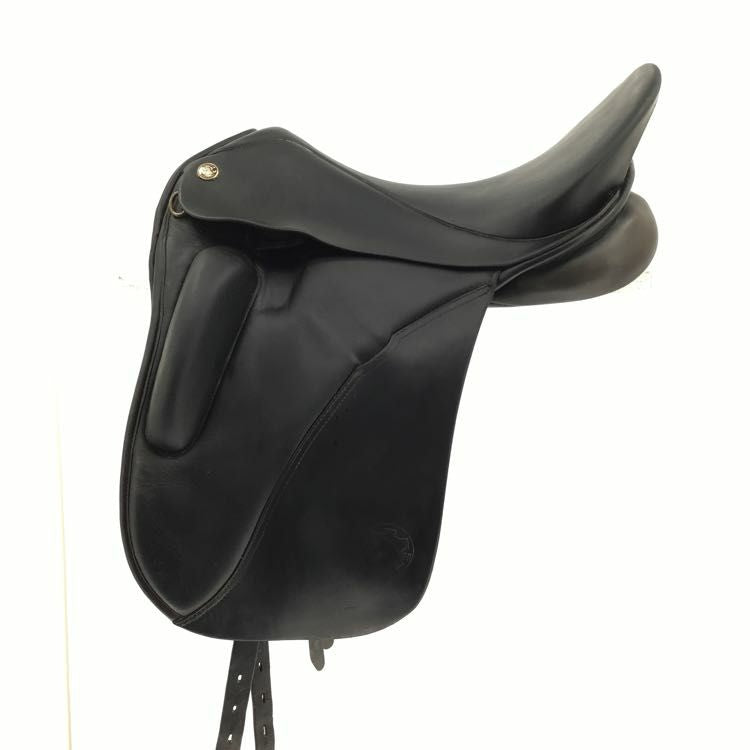How to Keep Your Riding Horse Healthy and Happy in Cold Weather: Pre- and Post-Exercise Tips

Winter is here, and that means colder temperatures, shorter days, and less time to ride. But that doesn't mean you have to stop exercising your horse altogether. In fact, regular exercise can help your horse (and you) stay healthy, fit, and happy during the winter months. However, you need to take some extra precautions to make sure your horse is comfortable and safe before, during, and after exercise in cold weather. Here are a few tips to help you and your horse enjoy winter riding.
Before Exercise: Warming Up
Warm up your horse gradually.
Cold muscles are more prone to injury, so start with a slow walk and gradually increase the speed and intensity of your exercise. A good warm-up is at least 10 to 15 minutes and gets your horse's blood flowing.
Consider clipping your horse.
If your horse has a thick winter coat, he may sweat excessively during exercise, which can lead to chills and skin problems later. Clipping your horse can help him regulate his body temperature and dry off faster after exercise. However, if you clip your horse, you need to provide him with adequate blankets to keep him warm when he is not working. There are different types of clips you can choose from, depending on how much hair you want to remove and how much exercise your horse gets. For example, a trace clip removes hair from the underside of the neck, chest, belly, and inner legs, while a full body clip removes hair from the entire body except the head and legs.
Use a quarter sheet or an exercise rug.
A quarter sheet or an exercise rug is a blanket that covers your horse's hindquarters and attaches to the saddle or girth. It can help keep your horse's muscles warm and prevent stiffness during exercise. It can also protect your horse from wind and snow. You can use a quarter sheet or an exercise rug during the warm-up and cool-down phases of your exercise, or throughout the entire session if it is very cold.
During Work
Avoid slippery or frozen ground.
Ice, snow, and mud can make the ground slippery and dangerous for your horse. If possible, ride on a well-maintained arena or trail that has good footing and drainage. If you have to ride on slippery ground, be careful and avoid sudden turns, stops, or jumps. Go a bit slower and make sure your horse is in a good balance. You can also use studs on your horse's shoes to improve traction, but make sure you remove them after exercise. Partial or full snow pads can also be put on by your farrier to prevent the dreaded "snowball" or "high heel" effect of wet snow that can pack into your horse's hooves.
Be aware of your horse's breathing and heart rate.
Cold air can irritate your horse's lungs and make breathing harder, especially if your horse has respiratory issues. To avoid overexerting your horse, pay attention to his breathing and heart rate. You can use a stethoscope or a heart rate monitor to check your horse's heart rate before, during, and after exercise. A normal resting heart rate for a horse is between 28 and 44 beats per minute, and it should not exceed 180 beats per minute during exercise. Larger or heavier horses may have a slightly slower heart rate, and ponies and foals may have a slightly higher heart rate. If your horse's heart rate is too high or does not return to normal within 15 minutes after exercise, you may need to reduce the intensity or duration of your exercise.
Provide water and electrolytes.
Your horse needs to stay hydrated during exercise, especially in cold weather. Horses typically drink less naturally in colder weather, and they typically get less moisture from forage during the winter months. Dehydration can lead to colic, impaction, and other health issues. Provide your horse with clean, fresh water before, during, and after exercise. You can also add electrolytes to your horse's water or feed to replace the minerals lost through sweat. Electrolytes can help your horse maintain his fluid balance, muscle function, and appetite. However, do not force your horse to drink if he is not thirsty, and do not give him cold water if he is hot or sweaty, as this can cause colic or shock. Instead, use warm water or let the water cool down to room temperature before offering it to your horse.
After Exercise: Cooling Down
Cool down your horse properly.
Cooling down your horse is just as important as warming him up. A proper cool-down should last at least 10 to 15 minutes and consist of walking and trotting until your horse's breathing and heart rate return to normal. Cooling down your horse can help prevent muscle soreness, stiffness, and injury. It can also help your horse dry off faster and avoid catching a chill. You can also dismount and hand walk your horse with a cooler on to cool them out.
Use a wool or fleece cooler.
A cooler or a fleece blanket is a breathable and absorbent blanket that you can put on your horse after exercise to help him dry off and stay warm. A cooler or a fleece blanket can wick away the moisture from your horse's coat and prevent heat loss. You can use a cooler or a fleece blanket until your horse is completely dry, and then replace it with a regular blanket or leave your horse unblanketed, depending on the weather and your horse's needs.
Residual sweat, salt, moisture and mud left on your horse's coat and legs can lead to rain rot and other skin issues. Be sure to curry and brush your horse thoroughly once they are dry to remove dirt and debris trapped under the coat. A powdered product like Coat Defense or a mixture of vinegar and water kept in a spray bottle can help keep fungus and bacteria at bay and maintain your horse's healthy shine. Plus, dry and fluffy hair retains heat better than damp or flattened hair and will help your horse stay warm.
Check your horse for injuries.
After exercise, you should check your horse for any signs of injury, such as cuts, scrapes, bruises, swelling, or lameness. You should also check your horse's hooves for any cracks, chips, or foreign objects, such as stones, ice, or snow. If your horse is frequently in wet or muddy conditions, it's good to be aware of thrush and other hoof conditions and treat as necessary. If you find any injuries, treat them accordingly or contact your veterinarian if they are serious or do not heal properly.
We hope these tips will help you and your horse enjoy winter riding and stay healthy and comfortable. Remember, every horse is different, so you need to adjust your horse's care and exercise routine according to his individual needs and preferences. If you have any questions or concerns about your horse's health or well-being, you should always consult your veterinarian. Remember, always consult with your veterinarian, trainer, and barn manager, to determine and implement the best care practices for your horse's needs.
If you need any supplies or equipment for your horse, you can find them at Maryland Saddlery. We have a wide range of products for you and your horse, including blankets, coolers, quarter sheets, as well as riding apparel to keep you toasty head to toe. Visit our website or one of our three stores today and see what we have to offer!
Browse Blankets, Coolers, & Rugs
Browse Women's Winter Riding Apparel
Sell My Gently Used Blankets, Coolers, Quarters Sheets, & Riding Apparel
Don't see something you love today? We have SO much inventory, we can't possibly list it all online. Reach out to us or visit us in-store, 7 days a week and we'd be happy to check our inventory. Something fresh and fun is added every day!
Sources:
University of Minnesota Extension
Rutgers University Equine Science Center


